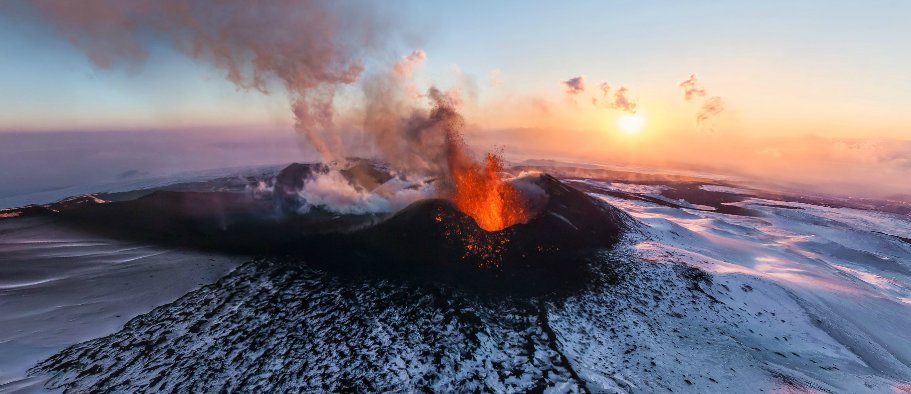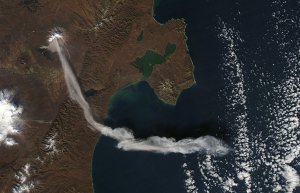

Volcanoes, these are generally harbingers of death and destruction to any neighboring ecosystems (depending on the magnitude of the eruption, of course). While the eruption of any individual volcano is rare, on the whole, eruptions are still quite common. This is primarily due to the sheer number of volcanoes dotting the surface of our planet–there are an an estimated 1,500 of them on Earth.
Typically, there are only about 50 active volcanoes scattered across the surface of the planet that will erupt in any given year. Two volcanoes that are in close proximity and actively spewing lava is even more unlikely. The odds of a third erupting nearby is exponentially greater. Even more so for four, but the odds were ever in their favor (Hunger Games, anyone?) in recent times.
This scenario played out in 2012, when four volcanoes located in Russia’s Kamchatka Peninsula erupted along the northwest edge of the ‘Ring of Fire.’ A string of eruptions around Tolbachik were especially poignant, resulting in a colossal river of molten lava spewing forth from fissures in Earth. This process also released a very small amount of sulfur dioxide ash and debris into our atmosphere, which could be problematic for us, as they could impact our global climate and decrease the amount of sunlight plants on our surface receive. Too many eruptions with too much released into the atmosphere, and we could have a mass extinction event on our hands. If nothing else, all continental flights could be grounded for months at a time (not nearly as bad as death and destruction, but still rather annoying).

The image seen here came from an amazing interactive volcano panorama that let’s all of us explore active volcanoes from the comfort (and safety) of our own home. Check it out. You can also check out this photo tour of the year 2012 in volcanic activity from The Atlantic. Furthermore, here are some mind-blowingly wonderful images of lava from an active volcano pooling into the ocean taken by Nick Selway and CJ Kale.